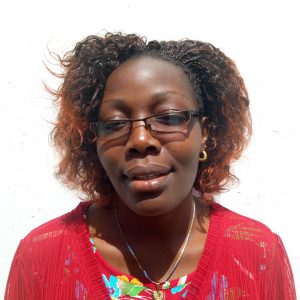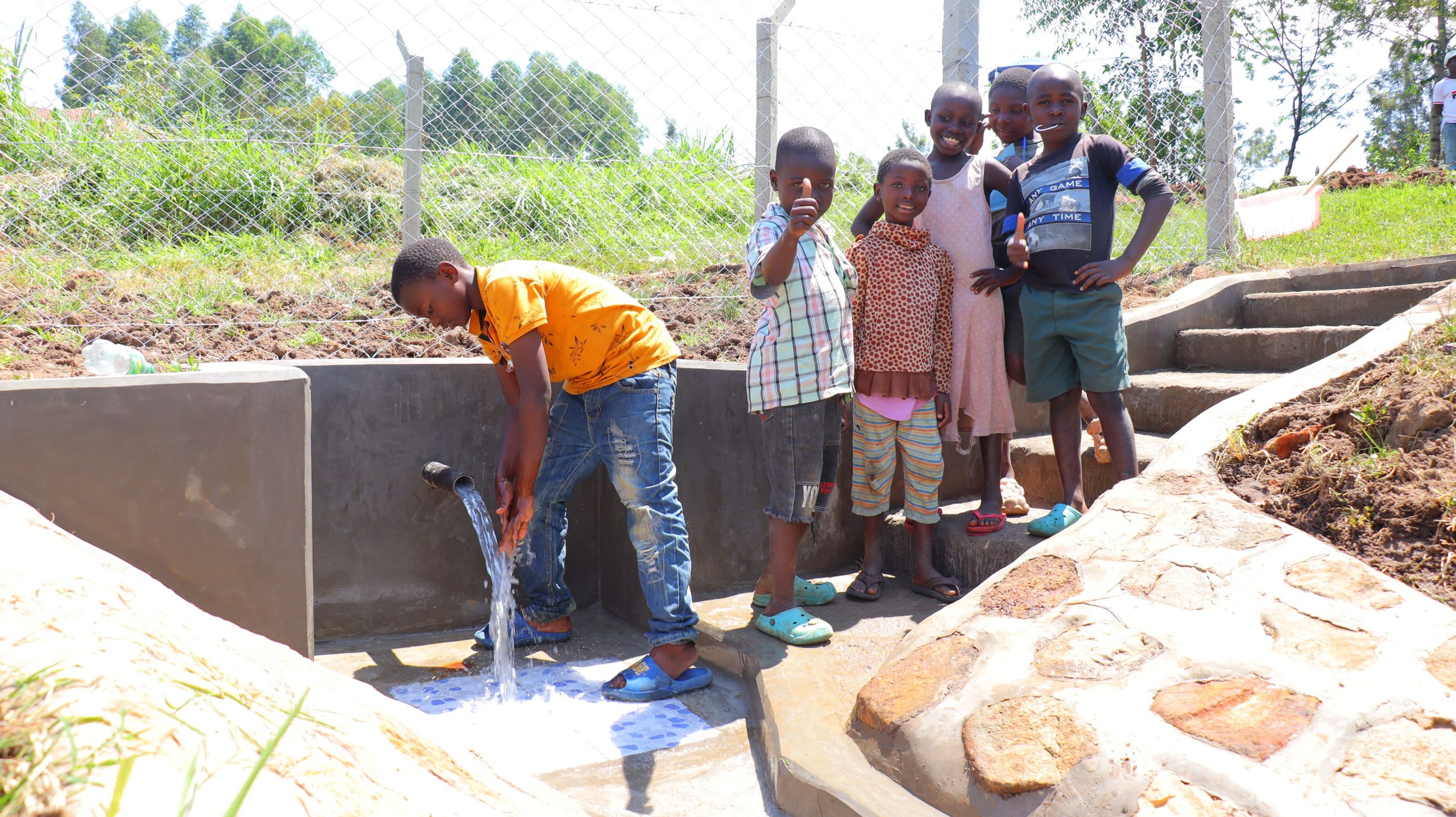The 780 people of the Emakhwale Community struggle to access sufficient water. Their current primary water source is an overcrowded, contaminated spring that steals their health, income, and time. There are people in the community starving because sadly they are too ill to work, and any money earned is spent on medical treatment.
"When I am sick all my work stands still because I am alone with my grandchildren, who go to school. While sick, I can't work on the farm, I can't find food for my grandchildren and myself. We're forced to starve and sometimes [only] survive on sugarcane. My cow also suffers hunger because I am not able to feed it. In addition, I spend all the profit and capital of my small business on medication, thus my business collapses," shared 63-year-old Christine Juma, a small-scale farmer raising her grandchildren.

Christine lugging her heavy jerrycan up the dangerous steps.
The spring is dangerous. It has broken sharp concrete risking injury to those who attempt to collect water. To make matters worse, the water they collect makes them sick, consistently. This community has been stuck in a cycle of poverty, as they spend all their time waiting in line to collect water which makes them sick, making it impossible to work and make an income. Any income that is generated, is spent treating water-related illnesses. Without clean water access, people like Christine are stuck between a rock and a hard place, without a way to better her and her grandchildren's lives.
Field Officer Jacqueline Kangu expressed, "During my interaction with Christine I felt emotional when she mentioned starving or chewing sugar cane together with her grandchildren because she had fallen sick and spent all her money on medication, and has no other source of food. I can't imagine a sick person starving! It's indeed so sad."
"My grandchildren and I have kept on contracting water-related infections which has drained me financially, and even emotionally. I am not happy about the kind of life [I] am living," Christine expressed.

Christine outside her home.
"Indeed water is life. Just [to] mention a few [of the] importances of water because I can't mention all; I use water for drinking, cooking, cleaning to maintain hygiene, gardening, [and] for my livestock among others," she continued.
To paint a picture of how time-consuming water collection is, Christine must walk thirty minutes to the spring, wait for an hour for her turn, and then walk thirty minutes back home, carrying her heavy jerrycan. But she isn't just doing this once a day - she will have to do this up to three times a day. That's up to six hours a day spent collecting water that makes her and her grandchildren so ill they can't function.

Community members and students waiting to collect water.
Protecting the spring means most importantly that the water will be naturally filtered and can be chlorinated. The water flow will increase allowing people to collect water faster and the collection area will be a safe environment, with no more slippery jagged steps.
The protection of the spring will enable people like Christine to focus on growing their livelihood and raising healthy grandchildren instead of continuing to starve and barely survive. Just like the rest of the community, Christine and her family will have the opportunity to thrive with easy access to clean water!
"Protection of the spring will keep off all possible contaminants and ensure our access to safe water," Christine concluded, hopeful for a better future.
The Proposed Solution, Determined Together...
At The Water Project, everyone has a part in conversations and solutions. We operate in transparency, believing it benefits everyone. We expect reliability from one another as well as our water solutions. Everyone involved makes this possible through hard work and dedication.
In a joint discovery process, community members determine their most advantageous water solution alongside our technical experts. Read more specifics about this solution on the What We're Building tab of this project page. Then, community members lend their support by collecting needed construction materials (sometimes for months ahead of time!), providing labor alongside our artisans, sheltering and feeding the builders, and supplying additional resources.
Water Access for Everyone
This water project is one piece in a large puzzle. In Kenya, Sierra Leone, and Uganda, we're working toward complete coverage of reliable, maintained water sources that guarantee public access now and in the future within a 30-minute round trip for each community, household, school, and health center. One day, we hope to report that this has been achieved!
Training on Health, Hygiene & More
With the community's input, we've identified topics where training will increase positive health outcomes at personal, household, and community levels. We'll coordinate with them to find the best training date. Some examples of what we train communities on are:
- Improved hygiene, health, and sanitation habits
- Safe water handling, storage & treatment
- Disease prevention and proper handwashing
- Income-generation
- Community leadership, governance, & election of a water committee
- Operation and maintenance of the water point
Chlorine Dispensers
Installing chlorine dispensers is an important piece of our spring protection projects. Protecting a spring provides community members with an improved water source, but it doesn’t prevent contamination once the water is collected and stored. For example, if the water is clean and the container is dirty, the water will become contaminated.
We ensure that each chlorine dispenser is filled with diluted chlorine on a consistent schedule so that people can add pre-measured drops to each container of water they collect. That way, community members can feel even more confident in the quality of their water.

 Protected Spring
Protected Spring
 Rehabilitation Project
Rehabilitation Project

































